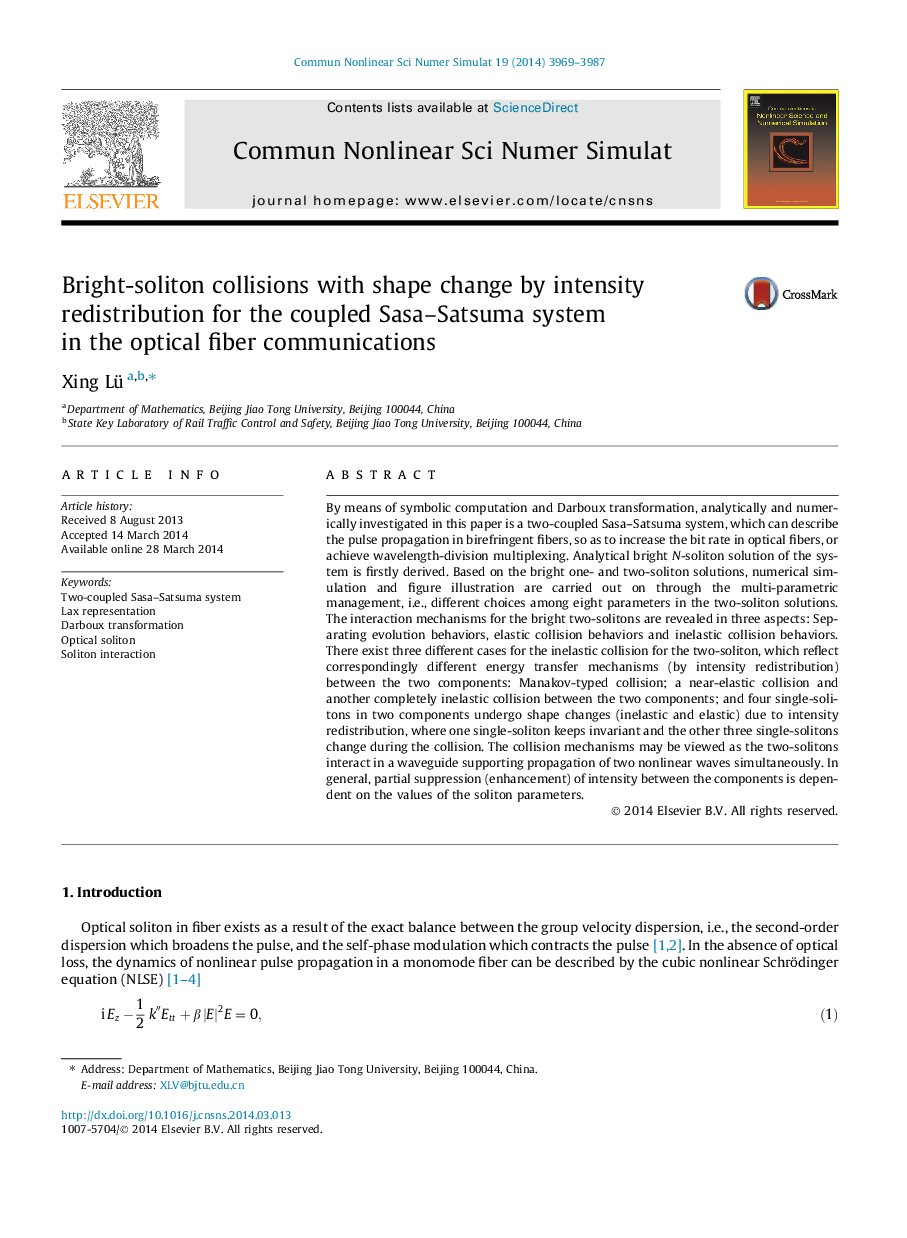| Article ID | Journal | Published Year | Pages | File Type |
|---|---|---|---|---|
| 758770 | Communications in Nonlinear Science and Numerical Simulation | 2014 | 19 Pages |
•The 5 × 5 Lax representation and Darboux transformation are constructed.•The bright N-soliton solutions are derived with symbolic computation.•Different soliton collision behavior and energy transfer mechanism are revealed.
By means of symbolic computation and Darboux transformation, analytically and numerically investigated in this paper is a two-coupled Sasa–Satsuma system, which can describe the pulse propagation in birefringent fibers, so as to increase the bit rate in optical fibers, or achieve wavelength-division multiplexing. Analytical bright N-soliton solution of the system is firstly derived. Based on the bright one- and two-soliton solutions, numerical simulation and figure illustration are carried out on through the multi-parametric management, i.e., different choices among eight parameters in the two-soliton solutions. The interaction mechanisms for the bright two-solitons are revealed in three aspects: Separating evolution behaviors, elastic collision behaviors and inelastic collision behaviors. There exist three different cases for the inelastic collision for the two-soliton, which reflect correspondingly different energy transfer mechanisms (by intensity redistribution) between the two components: Manakov-typed collision; a near-elastic collision and another completely inelastic collision between the two components; and four single-solitons in two components undergo shape changes (inelastic and elastic) due to intensity redistribution, where one single-soliton keeps invariant and the other three single-solitons change during the collision. The collision mechanisms may be viewed as the two-solitons interact in a waveguide supporting propagation of two nonlinear waves simultaneously. In general, partial suppression (enhancement) of intensity between the components is dependent on the values of the soliton parameters.
